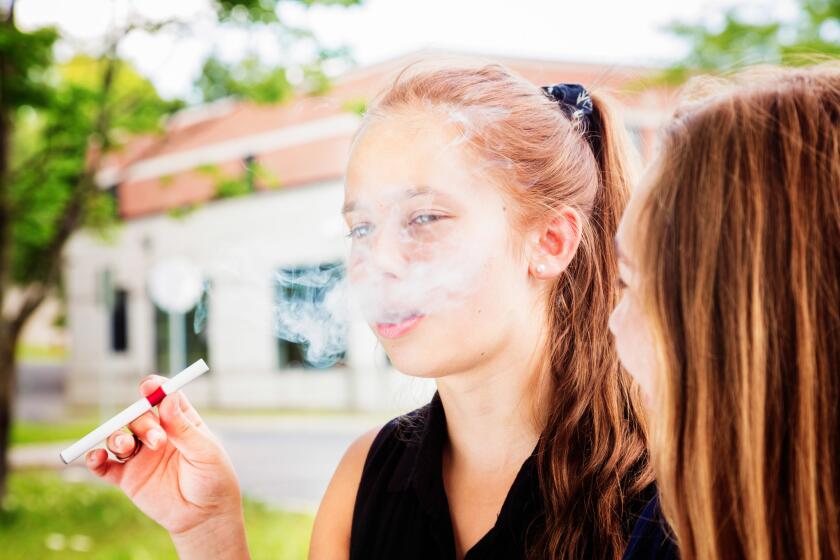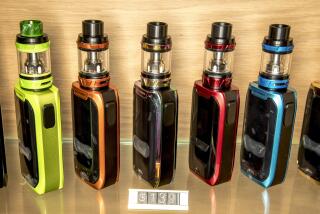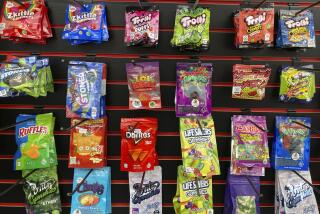Fruity flavors lure teens into vaping longer and taking more puffs, study says
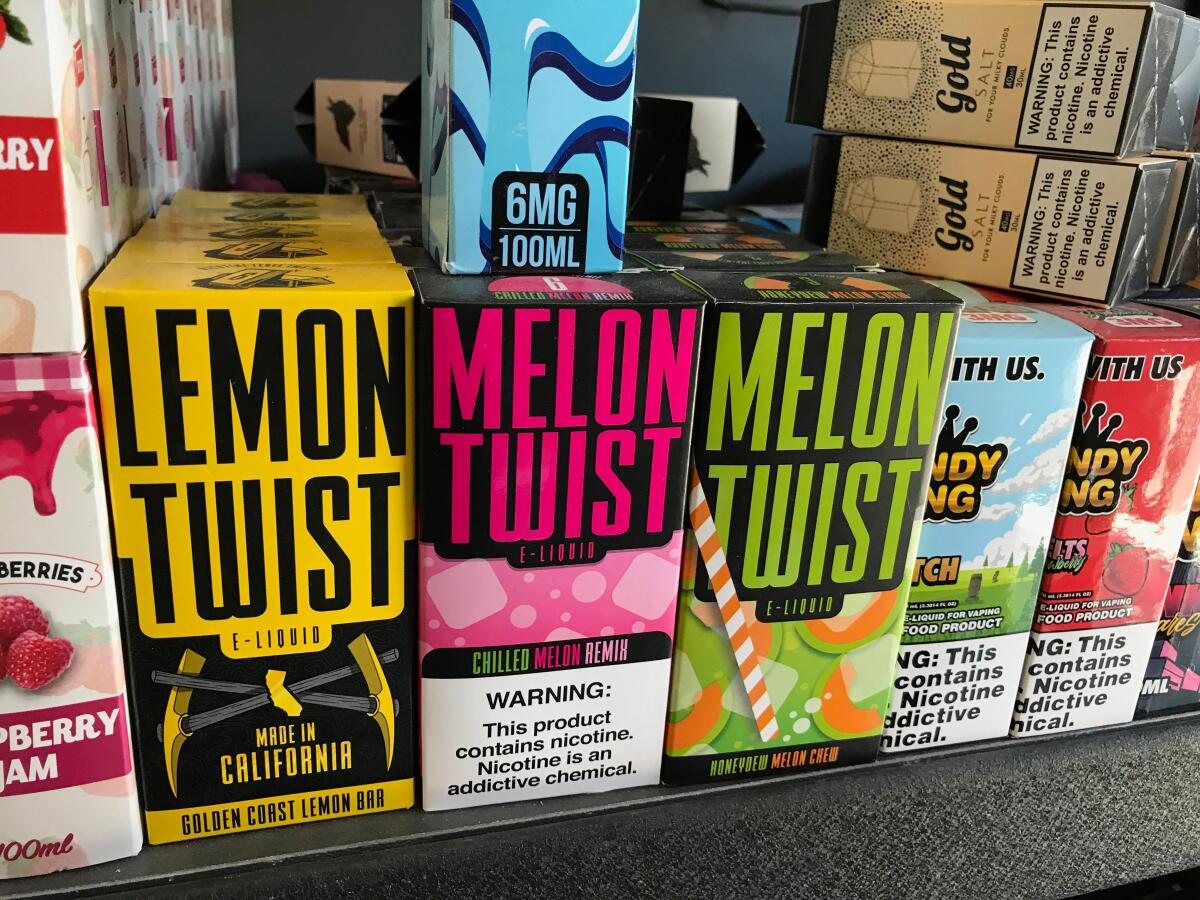
Most experts agree that sweet flavors like cotton candy and mango help entice teens to try their first-ever puff on an electronic cigarette. But what keeps them coming back?
Flavors appear to play a role in that too, according to a new study of Los Angeles high school students. Those who vaped with flavors other than tobacco and menthol were more likely to maintain their habit over the long term — and they took more puffs each time they reached for their device.
The findings, published Monday in the journal Pediatrics, provide another piece of evidence to help experts understand the causes of a skyrocketing addiction crisis across the country. Millions of teenagers are vaping, and hundreds of thousands of them will develop a nicotine addiction that prompts them to switch to smoking regular cigarettes.
“Once they’ve started, if they use a sweetly flavored product, they’re more likely to stick with it,” said study leader Adam Leventhal, director of the USC Health, Emotion, and Addiction Laboratory.
“It’s that simple,” he said. “If the product you’re using is really appealing, you’re more hard-pressed to put it away.”
E-cigarettes lack many of the carcinogenic ingredients found in traditional cigarettes, but they still contain an array of chemicals with unknown health effects. Aside from the direct risks, epidemiologists have found that teens who vape are more likely to become smokers than their peers who don’t vape. That’s significant because smoking is the leading cause of preventable deaths.
The Food and Drug Administration took action to restrict kid-friendly flavors in regular cigarettes in 2009. But when it did so, it failed to extend its new rules to electronic cigarettes.
The FDA tried to ban flavors years before the vaping outbreak. Top Obama officials rejected the plan
In just 46 days, over 100 tobacco advocates helped nix the ban on flavored e-cigarettes that might have prevented addiction in teens. Here’s how.
By 2014, Centers for Disease Control and Prevention reported that vaping among adolescents had increased by nearly 800% in just three years. More than 80% of teenagers who vaped said they did it because “it comes in flavors I like.”
“Those increases were pretty striking,” Leventhal said. “They sparked our interest.”
So Leventhal and his team decided to examine whether teenagers who tried vaping with fruity or dessert-like flavors developed a notably higher frequency or intensity in the behavior over the next six months.
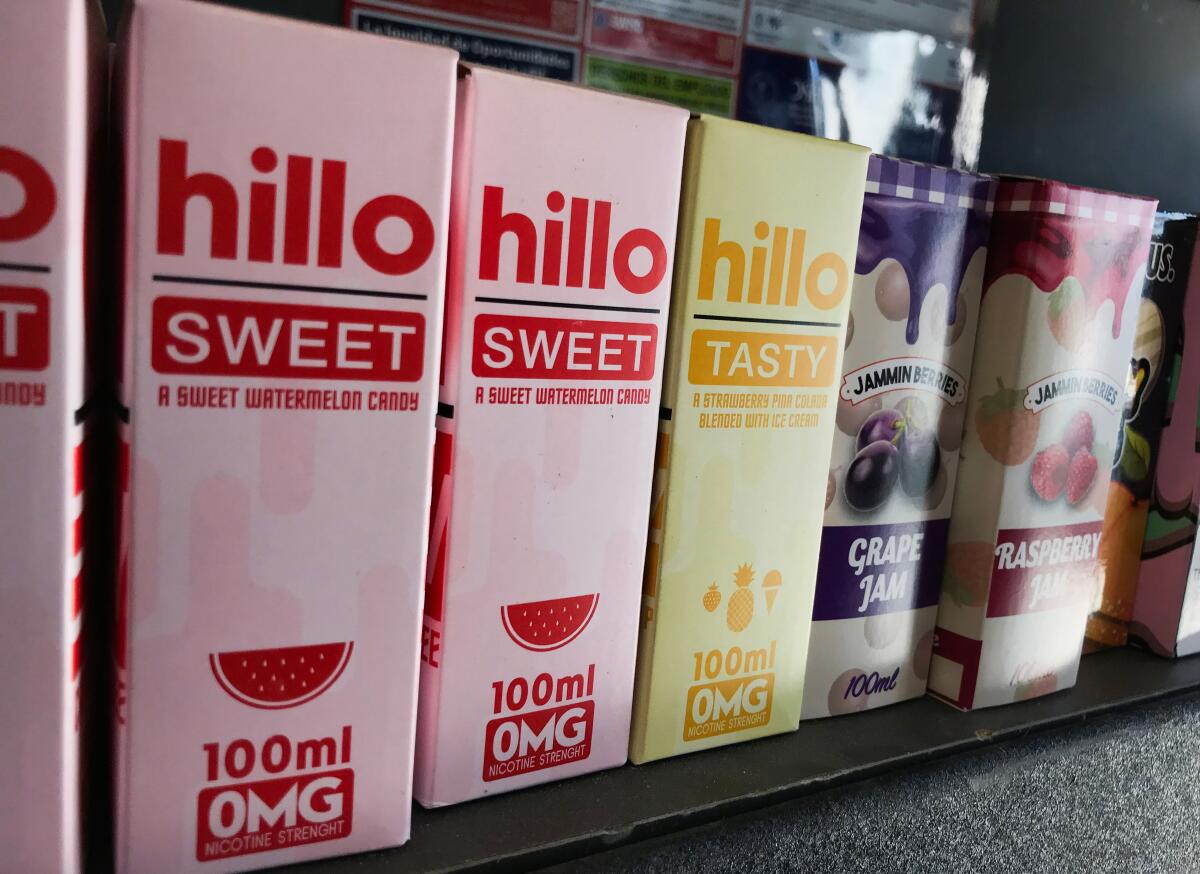
The researchers examined five sets of questionnaires from 478 Los Angeles high school students who said they vaped. The questionnaires were filled out twice a year, beginning when the students were in 10th grade and ending in the spring of their senior year.
Students who vaped were asked whether they had used at least one flavor other than tobacco or menthol, such as “candy,” “dessert,” or “fruit.” Six months later, researchers asked how many days the students had vaped in the past month and how many puffs they had taken during each use.
Among teens who said they used sweet flavors, in 64% of the cases, they were still vaping six months later. Among those who only used tobacco or menthol flavors, or who used flavorless vaping liquids, the vaping habit continued for six months in 43% of cases.
The teenagers who used sweet flavors were also taking more puffs at the six-month mark: an average of 3.1 puffs per vaping episode, compared with 1.5 puffs for those who used traditional or flavorless options.
The recent vaping deaths are tragic, but research shows that the toll of electronic cigarettes — with or without THC — will be far worse over the long term.
In their analysis, the researchers accounted for more than a dozen other factors that could have impacted e-cigarette usage, including the types of devices the students used and their personality traits. “We still found associations that were fairly sizable,” Leventhal said.
There was no clear link between sweet flavors and the number of days vaped over the past month, nor with the number of times a student vaped per day. It’s possible a link would have emerged if the study had included more students who didn’t use sweet flavors, Leventhal said.
Bruce Nye, president of the board of the Consumer Advocates for Smoke-Free Alternatives Assn., said the number of students included in the study was too small for researchers to draw concrete conclusions about a link between vaping flavors and teens’ vaping habits. He added that the researchers didn’t conduct any tests to see whether making sweet favors off-limits led to reduced vaping and called the study “junk science.”
But Bonnie Halpern-Felsher, a developmental psychologist at Stanford University who studies adolescent decision-making about tobacco products, said the Pediatrics report is an important addition to “mounting evidence” of the dangers posed by kid-friendly flavors.
“Flavors are the gateway drug in many ways,” said Halpern-Felsher, who wasn’t involved in the study. Eliminating flavored tobacco products will “not only help prevent the onset of tobacco, but the continuation and progression of use,” she added.
Leventhal said those kinds of policy issues had been on his mind since he started the study. While many teens will still experiment with e-cigarettes, he said, limiting teens’ exposure to sweet flavors could reduce their risk of becoming long-term nicotine addicts.
The results may help regulators at the FDA and around the country decide whether to move forward with proposals to ban flavored vaping products. Last month, President Trump proposed a ban on thousands of e-cigarette flavors. The Los Angeles County Board of Supervisors has already approved a ban on flavored tobacco products that will take effect on Thursday.
Juul Labs Inc., whose e-cigarettes are particularly popular with teens, stopped selling fruit, mango, creme and cucumber-flavored vaping “pods” this month. (Mint and menthol pods are still available, the company said.)

